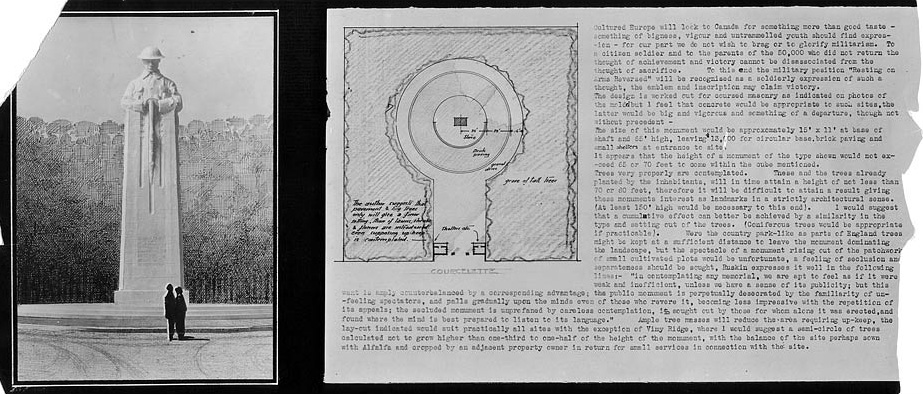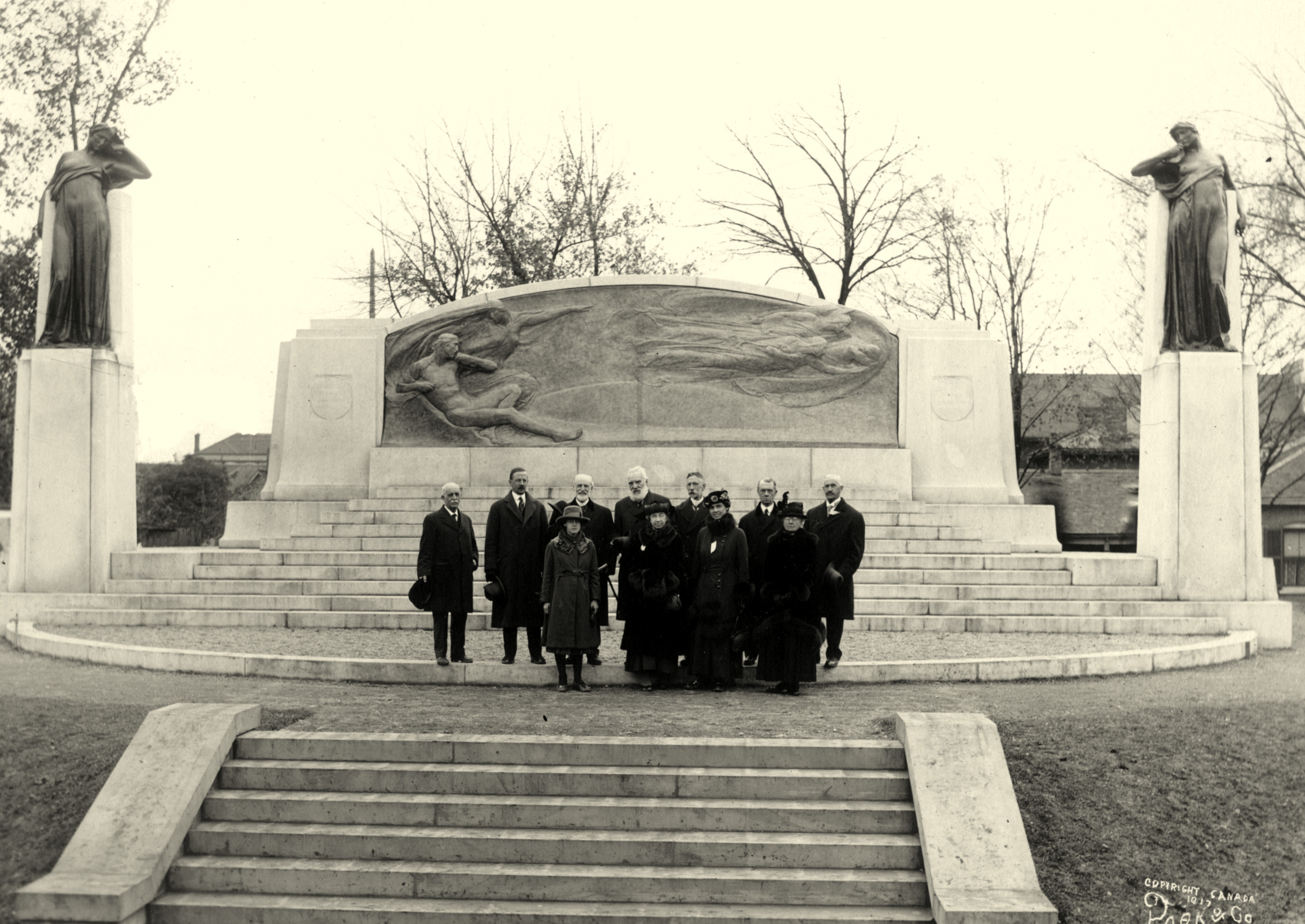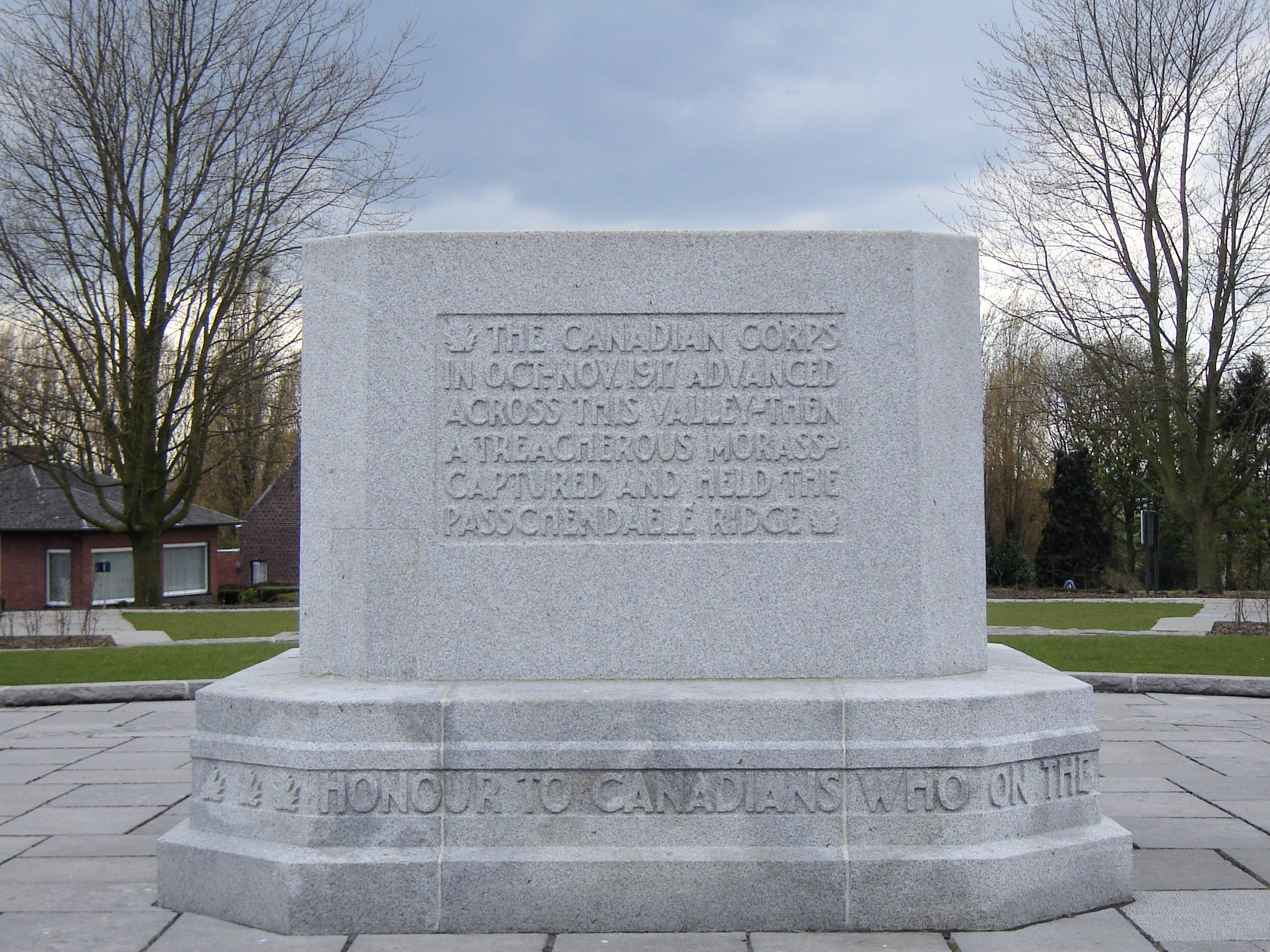|
Hill 62 Memorial
The Canadian Hill 62 (Sanctuary Wood) Memorial is a war memorial that commemorates the actions of the Canadian Corps in defending the southern stretches of the Ypres Salient between April and August 1916 including actions in battle at the St Eloi Craters, Hill 62, Mount Sorrel and Sanctuary Wood. These battles marked the first occasion in which Canadian divisions engaged in planned offensive operations during World War I. In those actions the Canadians reconquered vital high-ground positions that denied the Germans a commanding view of the town of Ypres itself. Historical Background Actions of St Eloi Craters On April 3, 1916, the Canadian Corps, including the newly formed and inexperienced 2nd & 3rd Canadian Divisions was dispatched to a stretch of the front south of Ypres at the St. Eloi Craters. There they found themselves in a wasteland, in places waist-deep in water and mud, with six large mine craters and few trench defenses under the full view of the German forces ... [...More Info...] [...Related Items...] OR: [Wikipedia] [Google] [Baidu] |
Hill 62 Memorial
The Canadian Hill 62 (Sanctuary Wood) Memorial is a war memorial that commemorates the actions of the Canadian Corps in defending the southern stretches of the Ypres Salient between April and August 1916 including actions in battle at the St Eloi Craters, Hill 62, Mount Sorrel and Sanctuary Wood. These battles marked the first occasion in which Canadian divisions engaged in planned offensive operations during World War I. In those actions the Canadians reconquered vital high-ground positions that denied the Germans a commanding view of the town of Ypres itself. Historical Background Actions of St Eloi Craters On April 3, 1916, the Canadian Corps, including the newly formed and inexperienced 2nd & 3rd Canadian Divisions was dispatched to a stretch of the front south of Ypres at the St. Eloi Craters. There they found themselves in a wasteland, in places waist-deep in water and mud, with six large mine craters and few trench defenses under the full view of the German forces ... [...More Info...] [...Related Items...] OR: [Wikipedia] [Google] [Baidu] |
Canadian Battlefields Memorials Commission
The Canadian Battlefields Memorials Commission was a special commission established by the House of Commons of Canada, on the recommendations of the British Battle Exploits Memorials Committee. The Canadian House of Commons established the committee in September 1920 with the mandate of selecting and establishing First World War memorial sites in France and Belgium. History In February 1919, the Battle Exploits Memorials Committee, a Special Committee of the House of Commons, was formed in the United Kingdom with the mandate of identifying the principal battle sites and allocating sites to appropriate countries. Hucker p. 280 The Canadian representative to the committee, Brigadier General Garnet Hughes, applied for eight memorial sites based upon the recommendation of a collection of Canadian military officers, presided over by Canadian Corps commander Lieutenant General Arthur Currie. In April 1920, the Battle Exploits Memorials Committee announced that it had been awarded eight ... [...More Info...] [...Related Items...] OR: [Wikipedia] [Google] [Baidu] |
Walter Allward
Walter Seymour Allward, (18 November 1874 – 24 April 1955) was a Canadian monumental sculptor best known for the Canadian National Vimy Memorial. Featuring expressive classical figures within modern compositions, Allward's monuments evoke themes of memory, sacrifice, and redemption. He has been widely praised for his "original sense of spatial composition, his mastery of the classical form and his brilliant craftsmanship". Allward's 1917 heroic monument, the Bell Telephone Memorial, has been seen as the finest example of his early works. It brought the sculptor fame and led to Allward later creating the Canadian National Vimy Memorial in France, his most renowned work. Some of the sculptor's works have also been acquired by the National Gallery in Ottawa, Ontario, Canada. In addition to his sculptural works, Allward produced a series of approximately one hundred allegorical drawings exploring the subject of war at the onset of the Second World War. Allward has been described ... [...More Info...] [...Related Items...] OR: [Wikipedia] [Google] [Baidu] |
Stanstead, Quebec
Stanstead is a town in the Memphrémagog Regional County Municipality in the Estrie region of Quebec, located on the Canada–United States border across from Derby Line, Vermont. The Town of Stanstead was created in 1995 by the merger of the former villages of Stanstead Plain and Beebe (formerly Beebe Plain) and the Town of Rock Island. It is not to be confused with the township of Stanstead, which is nearby although not directly adjacent (the municipality of Ogden lies in between). Not only is Stanstead home to the Haskell Free Library and Opera House—the only heritage building deliberately constructed straddling the border between both countries—it also features Canusa Street, one of a number of streets in the world where the country border corresponds to the middle line marker, effectively making across-the-street neighbors residents of two countries. History Prior to merging, Stanstead Plain, Rock Island and Beebe were known informally as "les trois villages" or "t ... [...More Info...] [...Related Items...] OR: [Wikipedia] [Google] [Baidu] |
Percy Erskine Nobbs
Percy Erskine Nobbs (August 11, 1875 – November 5, 1964) was a Canadian architect who was born in Haddington, East Lothian, and trained in the United Kingdom. Educated at the Edinburgh Collegiate School and Edinburgh University, he spent most of his career in the Montreal area. Often working in partnership with George Taylor Hyde, Nobbs designed a great many of what would become Montreal's heritage buildings and was a key Canadian proponent of the Arts and Crafts Movement in architecture. He served as the director of McGill University's School of Architecture for ten years and designed many buildings on the campus as well as McGill's Coat of Arms, which continues to be used today. Architecture career He designed the fire station on Euston Road, in the "Arts and Crafts" style. It was built in 1901-2 and still stands. Nobbs had already received awards and won prizes as a practicing architect when he came to McGill University in 1903 to teach architecture. He got permissio ... [...More Info...] [...Related Items...] OR: [Wikipedia] [Google] [Baidu] |
Le Quesnel Memorial
The Le Quesnel Memorial is a Canadian war memorial that commemorates the actions of the Canadian Corps during the 1918 Battle of Amiens during World War I. The battle marked the beginning of a 96-day period known as "Canada's Hundred Days" that saw the crumbling of the German Army and ultimately the Armistice that ended the war. The memorial is located just to the southwest of the village of Le Quesnel (from which it takes its name), on the road between Amiens and Roye, in northern France. Monument Selection At the end of the war, The Imperial War Graves Commission granted Canada eight sites - five in France and three in Belgium - on which to erect memorials. Each site represented a significant Canadian engagement in the war and for this reason it was originally decided that each battlefield would be treated equally and graced with identical monuments. 205 The Canadian Battlefields Memorials Commission was formed in November 1920 to discuss the process and conditions for a ... [...More Info...] [...Related Items...] OR: [Wikipedia] [Google] [Baidu] |
Dury Memorial
The Dury Memorial is a World War I Canadian war memorial that commemorates the actions of the Canadian Corps in the Second Battle of Arras The Battle of Arras (also known as the Second Battle of Arras) was a British Empire, British offensive on the Western Front (World War I), Western Front during the First World War. From 9 April to 16 May 1917, British troops attacked German Empi ..., particularly their breakthrough at the Drocourt–Quéant Line switch of the Hindenburg Line just south of the town of Dury, Pas-de-Calais, France. Historical background The events commemorated with the Dury Canadian Memorial took place in late August and early September 1918 during a period known as the Hundred Days Offensive or Canada's Hundred Days. Following close on the heels of their breakthrough success at the Battle of Amiens (1918), Battle of Amiens in August 1918, Allied Command sought to press the advantage created with the Amiens Offensive and penetrate a new axis of attack. T ... [...More Info...] [...Related Items...] OR: [Wikipedia] [Google] [Baidu] |
Courcelette Memorial
The Courcelette Memorial is a Canadian war memorials, Canadian war memorial that commemorates the actions of the Canadian Corps in the final two and a half months of the infamous four-and-a-half-month-long Battle of the Somme, Somme Offensive of the World War I, First World War. The Canadians participated at the Somme from early September to the British offensives end in mid-November 1916, engaging in several of the battles-within-the-battle of the Somme, including actions at: Battle of Flers-Courcelette, Flers-Courcelette, Battle of Thiepval Ridge, Thiepval Ridge, Battle of the Ancre Heights, the Ancre Heights, Battle of the Ancre, the Ancre as well as a small role in providing relief to the First Australian Imperial Force in the final days of the Battle of Pozières. The battles on the Somme were the first in which all four Canadian divisions participated in the same battle, although not together in a cohesive formation. The Canadian divisions suffered over 24,000 casualties. Mo ... [...More Info...] [...Related Items...] OR: [Wikipedia] [Google] [Baidu] |
Bourlon Wood Memorial
The Bourlon Wood Memorial, near Bourlon, France, is a Canadian war memorial that commemorates the actions of the Canadian Corps during the final months of the First World War; a period also known as Canada's Hundred Days, part of the Hundred Days Offensive. Historical background The memorial at the Bourlon Wood commemorates the final series of battles the Canadian Corps fought in the latter phases of the Hundred Days Offensive (also known as Canada's Hundred Days) during the final months of the Great War. Particularly celebrated at Bourlon Wood are the Canadian victories the Battle of the Canal du Nord and the ensuing fight for the villages of Bourlon and Marquion and their flushing the German forces and Bourlon Wood, and the subsequent 'Pursuit to Mons' during which the Canadians participated in the liberation of the French cities of Cambrai, Denain (during the Battle of the Selle), Valenciennes and finally Mons in Belgium on 11 November 1918. Monument design Site s ... [...More Info...] [...Related Items...] OR: [Wikipedia] [Google] [Baidu] |
Passchendaele Memorial
The Passchendaele Canadian Memorial (''also known as Crest Farm Canadian Memorial'') is a Canadian war memorial that commemorates the actions of the Canadian Corps in the Second Battle of Passchendaele of World War I. The memorial is located on the former site of Crest Farm, an objective captured by the 4th Canadian Division during the assault of 30 October 1917.Nicholson p. 321 The battle The Second Battle of Passchendaele was the culminating and final attack of the Third Battle of Ypres during World War I. The battle took place in the Ypres Salient area of the Western Front, in and around the Belgian town of Passchendaele, between 26 October 1917 and 10 November 1917. The Canadian Corps was tasked with relieving the exhausted II Anzac Corps, continuing the advance started with the First Battle of Passchendaele and ultimately capturing the town of Passchendaele itself.Bean 929 In the low ground west of the Passchendaele Ridge three months of constant shelling had blocked the w ... [...More Info...] [...Related Items...] OR: [Wikipedia] [Google] [Baidu] |
.jpg)


